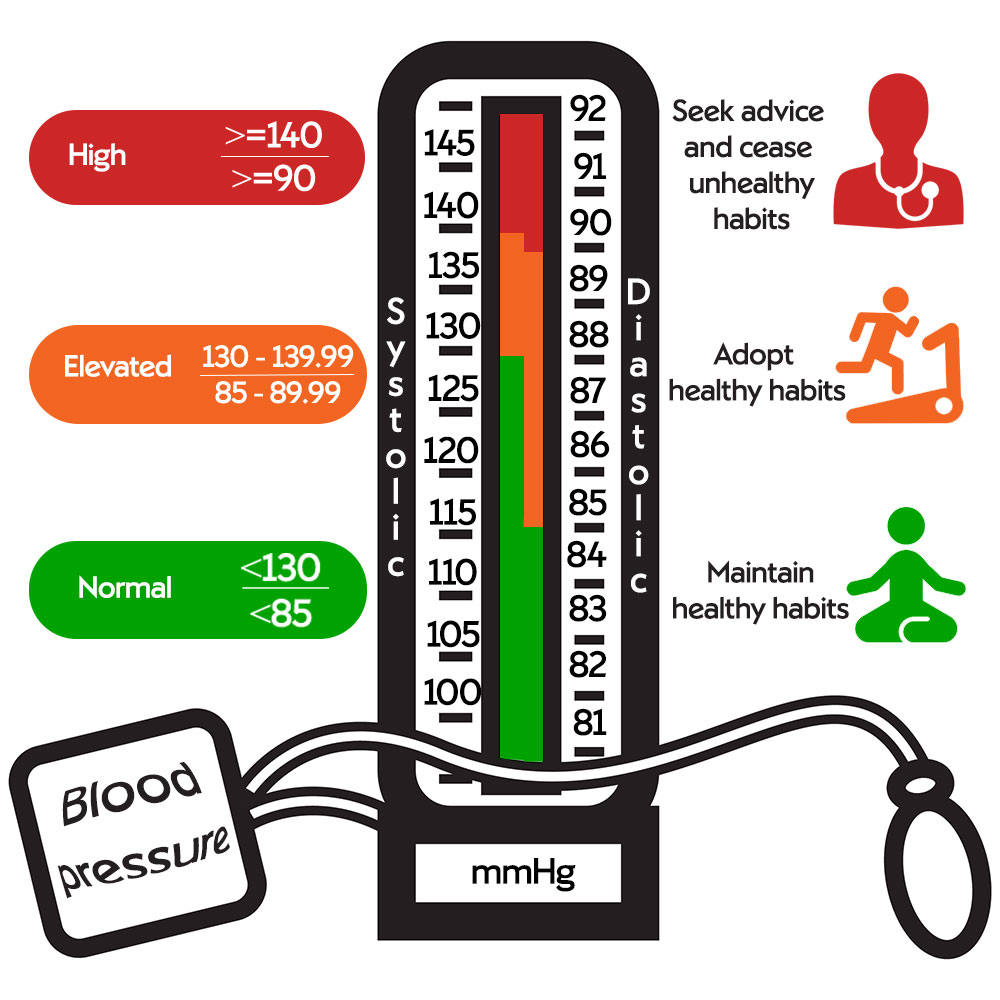Blood pressure numbers explained
- Overview
Blood pressure (BP) is usually shown as two numbers with one over the other.
What is systolic blood pressure?
The first number (or top number) is systolic blood pressure – the pressure in your arteries when your heart contracts.
What is diastolic blood pressure?
The second number (or bottom number) is diastolic blood pressure – the pressure in your arteries when your heart is refilling with blood between beats.
Both numbers are important and should be monitored to make sure they fall within the healthy range. At Nuffield Health, your BP numbers will fall into one of three categories:

What is normal blood pressure?
Normal blood pressure is under 130 systolic and under 85 diastolic, for example, 125/80.
Having normal BP is great, but it’s no excuse to be complacent. BP can increase if you don’t maintain a healthy lifestyle and diet.
What is elevated blood pressure?
Elevated blood pressure is anything between 130–139.99 systolic and 85–89.99 diastolic, for example, 135/88.
Elevated BP levels in this range may be reduced by making some simple lifestyle changes. Taking no action could see it increase to more dangerous levels, so it’s important to take steps to normalise your BP now. These include:
- Adjusting your diet. Read: 5 eating tips to help control blood pressure
- Increasing exercise. Read: 5 exercises to normalise blood pressure levels
- Reducing stress. Watch: Resilience: how stress affects the body and the brain
- Read how to make positive lifestyle changes
- Reduce caffeine intake.
You should also make an appointment to see a GP to get a better understanding of how high blood pressure is affecting your health.
What is high blood pressure?
High blood pressure is anything over 140 systolic and over 90 diastolic, for example, 150/95.
Having high BP, or hypertension, significantly increases your 10-year risk of all-cause mortality. If your systolic or diastolic BP falls into this range you should see a GP as soon as possible. They may prescribe medication and will advise you on the best course of action. The articles listed above will also provide guidance on making positive lifestyle changes.
Low blood pressure (hypotension)
If your blood pressure falls below 90/60 your body and brain may not be getting enough oxygenated blood. If this is an ongoing result you should seek medical advice. Things you can do to normalise your blood pressure include:
- Eat enough food for your height, weight and gender
- Exercise enough for your height, weight and gender
- Drinking enough water and staying hydrated
- Check any medications you are taking with a health professional
- Reduce your alcohol intake.
Other considerations
- Pre-existing conditions, including chronic diseases, may lower the blood pressure ranges outlined above. For example, a normal range for diabetics is <130/80, anything above these numbers falls into the red zone
- Blood pressure guides may be lower for some ethnic groups, particularly South Asians. Consult your GP if you're unsure about what normal BP is for you
- Accurate blood pressure readings are dependent on you being well-hydrated at the time of the reading. You are adequately hydrated when your urine is clear.
Checking your blood pressure at home
If you'd like to save multiple trips to the doctor, why not keep track of your blood pressure with your own blood pressure monitor? We also have a wide range of other home monitoring devices on our shop, so you can keep an eye on your general health too.
Last updated Tuesday 28 March 2023
First published on Friday 18 November 2016

